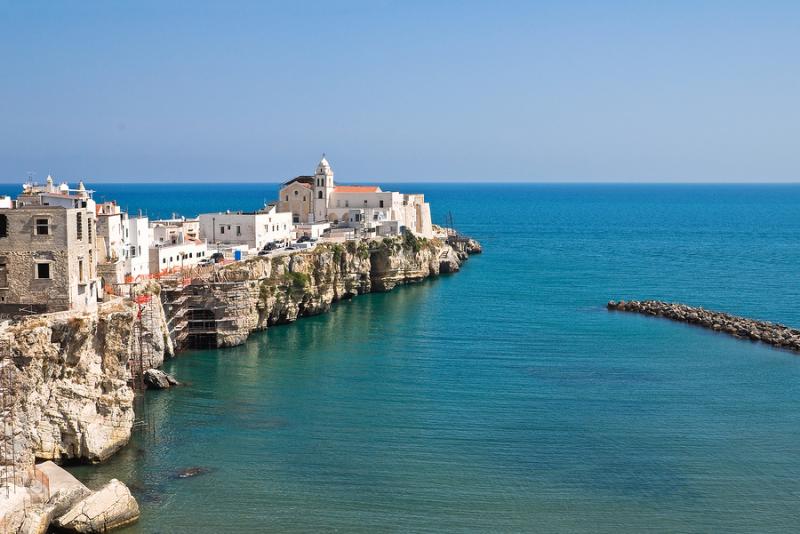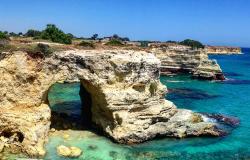Arriving from the north, the first place to experience the area’s delights is the small town of Rodi Garganico. As you wind your way down the hillside on the number 89 road, passing numerous olive and carob trees, you get your first close look at the Adriatic’s clear, turquoise waters and beautiful beaches of white sand and the harbourside where boats leave for the nearby Tremeti Islands, with several good restaurants specialising in seafood.

Travelling eastwards from Rodi, you come across Peschici, a popular holiday destination, with an old Greek centre. From near Peschici you can take a short drive to Vico del Gargano, a fascinating place where the centro storico area has large fortified walls and towers into which houses have been gradually incorporated over the centuries.
Here, you have the feeling that nothing much has changed during the last hundred years or more as you sample traditional rustic scenes: herbs and tomatoes drying in the sun, and working mules tethered up outside homes or even kept in next-door houses that have evolved into en-suite barns.
You can enjoy a picnic during spring and summer time, in the huge Foresta Umbra, under the shade of oaks and beeches, accompanied by distant sound of cowbells.
Holiday capital
Further east along the coastline, you notice numerous defensive towers like the Torre di San Sfinale - east of Peschici - and many coastal arches as the arch of San Felice – south of Scialmarino beach.

A little further along, you come to Vieste, an attractive town that has become the holiday capital of the Gargano and which has an extensive market on Monday mornings.
Drop down to the coast to the large Pizzomunno beach which begins with an enormous pinnacle jutting out of the sea with the town perched above the white cliffs. This stretches off southwards with places to eat and camp opposite the beach.
At the end of this coastline tour, there is the pleasant town of Mattinata, full of hotels and places to eat.
From here, many go further inland to visit Monte Sant’Angelo. Situated in a very elevated position, this town is built upon the cult of Archangel Michael who is supposed to have appeared inside a grotto.
The Santuario di San Michele was built on this spot, and the site of this miracle became a centre of pilgrimage and devotion, originally for pilgrims and Crusaders on their way to the Holy Land but today swarming with visitors from far afield.
Ancient and Modern Sanctuaries
The Sanctuary of San Michele is approached through a large, elaborate Gothic portico. Passing through the massive bronze doors from Constantinople, you nearly always have to jostle with crowds to see the interior, hewn out of solid rock and containing an 11th-century bishops’ throne and other precious works of art. Next door stands an unusual 13th-century octagonal bell tower, and below this, steps lead down to the Tomba di Rotari, believed to be the tomb of an early Lombard ruler.

Still further inland, you come to San Giovanni Rotondo, the birthplace of the miracle-working Padre Pio, whose likeness is seen everywhere in the town. The place is mainly associated with the Santa Maria delle Grazie church and convent and, at present, with a huge modern church behind it.
Most, however, arrive by coach or car and see only the car park ringed with kiosks selling gaudy souvenirs. Those not sharing the faith of its many visitors might find it overly commercialised. A large hospital, Casa Sollievo della Sofferenza, was the inspiration of Padre Pio – now San Pio - and overlooks the whole scene.
Further along the same road, the pilgrimage route continues to San Marco in Lamis with its San Matteo convent. Every Good Friday the fracchie procession is held as torches of burning sticks are pulled through the streets.







